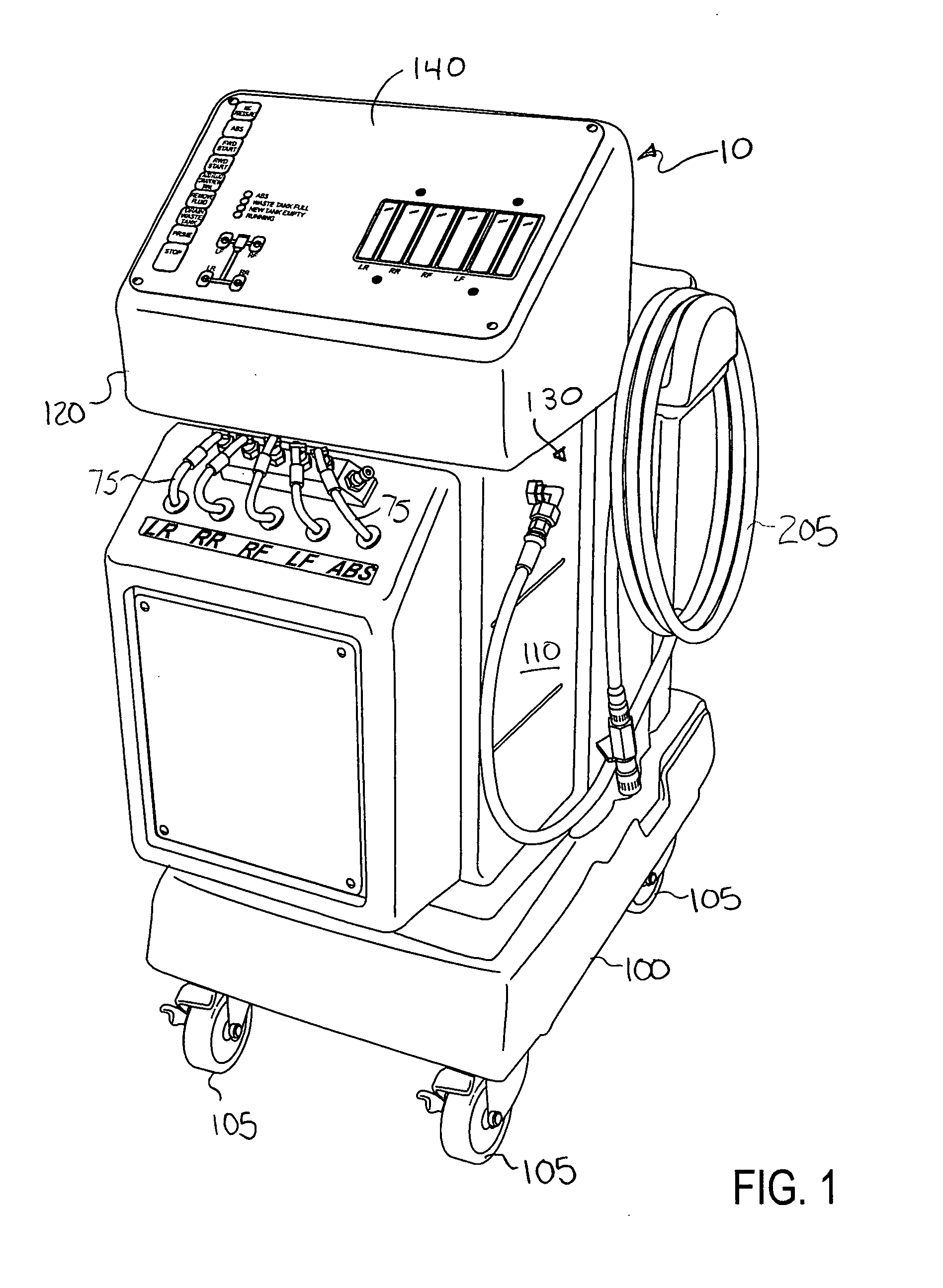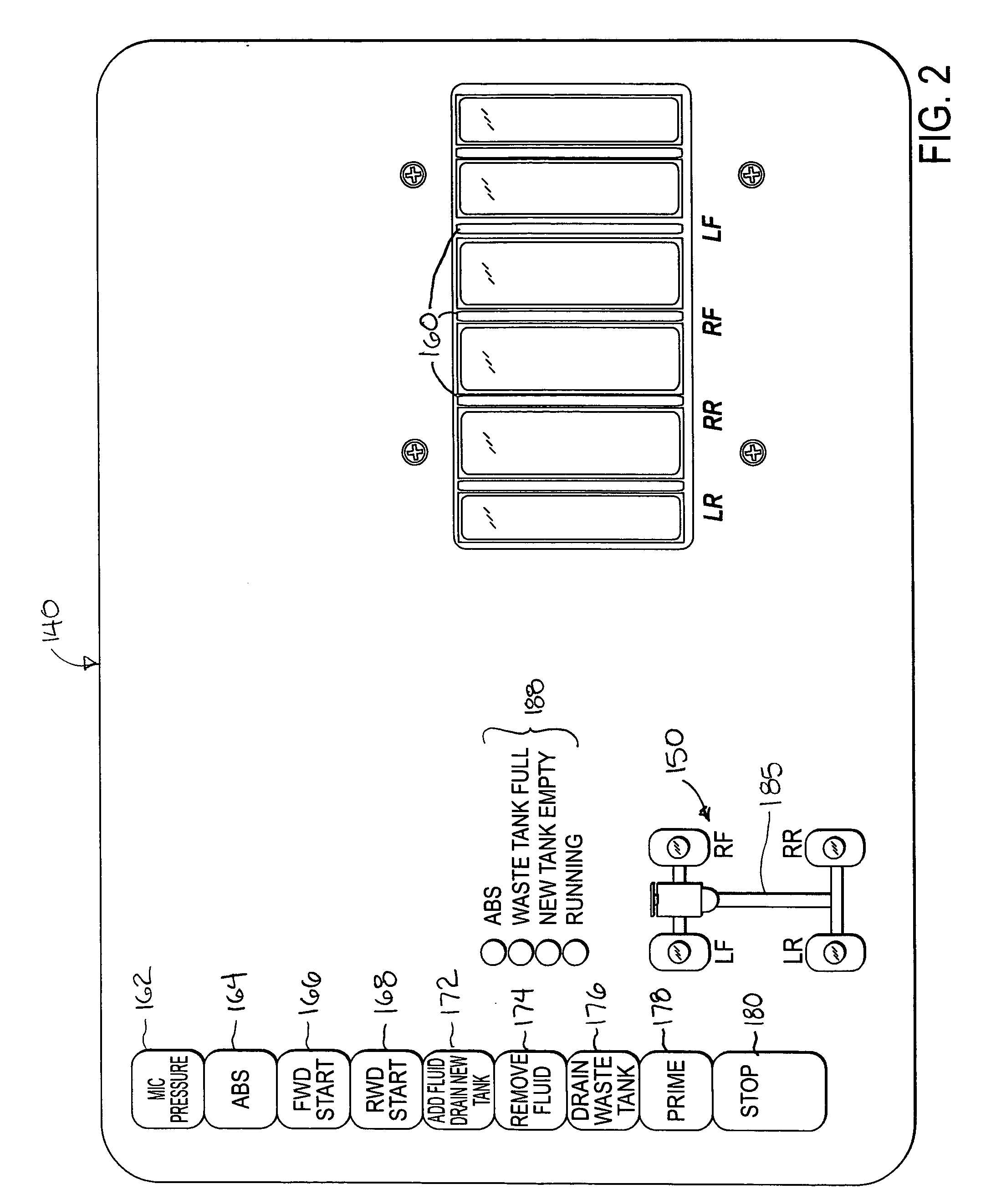Brake flush machine with ordered cylinder extraction
- Summary
- Abstract
- Description
- Claims
- Application Information
AI Technical Summary
Benefits of technology
Problems solved by technology
Method used
Image
Examples
Embodiment Construction
[0015]FIG. 1 illustrates an automatic brake flush machine according to the teachings of the present invention. The brake machine is a combination of plumbing components (pumps, tubing, valves) and electrical components (processors, electrical cables, display equipment) enclosed in a durable plastic housing. The housing 10 includes a platform 100 with four caster wheels 105 that allow the machine to be rolled quickly into position as needed to service the vehicle. On the platform 100 is a cabinet 110 that encloses a twenty quart waste fluid tank 70, a seven quart new fluid tank 20, an electrical system powered by a twelve volt battery such as those found in most passenger vehicles, a vacuum pump 55, a pressure pump 30, and a five valve solenoid 95 for controlling the extraction of waste fluid from the cylinders of the respective wheels and the ABS system 60.
[0016] The cabinet 110 includes a podium 120 having a column 130 and control area 140. The controls for operating the machine a...
PUM
| Property | Measurement | Unit |
|---|---|---|
| Distance | aaaaa | aaaaa |
Abstract
Description
Claims
Application Information
 Login to View More
Login to View More - R&D
- Intellectual Property
- Life Sciences
- Materials
- Tech Scout
- Unparalleled Data Quality
- Higher Quality Content
- 60% Fewer Hallucinations
Browse by: Latest US Patents, China's latest patents, Technical Efficacy Thesaurus, Application Domain, Technology Topic, Popular Technical Reports.
© 2025 PatSnap. All rights reserved.Legal|Privacy policy|Modern Slavery Act Transparency Statement|Sitemap|About US| Contact US: help@patsnap.com



